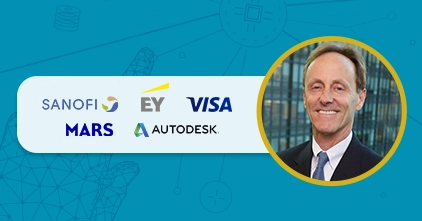Mobility ensures busy professionals find the right time and place to cultivate their skills

Smart devices have gradually become a staple in many different professional settings over the past few years. Communication, research, and productivity are now at the fingertips of many busy professionals whenever and wherever they are. Throughout the day, we conveniently rely on our mobile devices to set reminders, access email, look up information, and other work-related tasks. Training is increasingly becoming a part of this too.
Just like mobility, corporate training has become a game changer in market competition, but many companies and employees still struggle to balance responsibilities and development in this increasingly fast-paced world. The way we work is constantly changing, and the only way for businesses to grow and succeed is to keep up with the latest developments. Employers who engage with the latest technology and go mobile will have a headstart on their competitors.
Premier global market intelligence firm IDC estimates that 75% of Europe’s workforce will be mobile by 2018. Mobility has changed the way we work not only in Europe and the US, but all over the world. It enables employees to access and process information faster and more securely, for increased productivity and streamlined business processes.
Mobile Efficiency in Corporate Training
Flexible training tools allow organizations to better engage their employees and contribute to their learning and development. This is especially critical for professionals who do not have a fixed workspace or have varying schedules. Implementing this type of training reaches the increasing number of workers who work from home or travel overseas.
One major concern training managers might have with mobile learning is its effectiveness. In its early stages, mobile learning was the simple storage of text documents in the form of Word, PDF, or Powerpoint on portable devices, but things have quickly evolved. Now that content can be stored on the cloud, it is much more easily updated and accessible across multiple devices and teaching environments. Mobile learning now also covers a variety of media, including video lectures, reading materials, games, podcasts and social learning.
This transition in mobile learning capabilities means significant pedagogical implications. Mobile learners can optimize their time and incorporate a much more flexible schedule into their workday. They do not have to be anchored to a specific time or place, compared to desktop or pure face-to-face solutions. Learners can follow their courses right in their work environment and instantly apply their skills as a result.
This trend does not mean that the face-to-face classroom interaction and its digital virtual counterpart, the webinar, will be going away. It won’t make eLearning obsolete. In fact, the true trend is moving towards blended learning, which can combine face-to-face, telephone or video lessons, eLearning, and other methods, together with mobile learning, for a truly well-rounded training that meets the needs of today’s busy professional.
Mobile learning is a perfect supplement to corporate training. It is an efficient delivery method as a handheld reference with instant solutions to problems professionals may face throughout their day. It minimizes attendance issues and reduces the time spent scheduling, traveling, and waiting between tasks and responsibilities. With mobile learning, professionals can build knowledge and skills just by dedicating a few minutes on their mobile learning app when they’re sharpest mentally and with minimal preparation time. It also allows them to make the most of their downtime—even while on queue at the clinic, during their commute, or before heading to bed. Mobile learning makes corporate training more efficient and effective for today’s increasingly mobile workforce.




